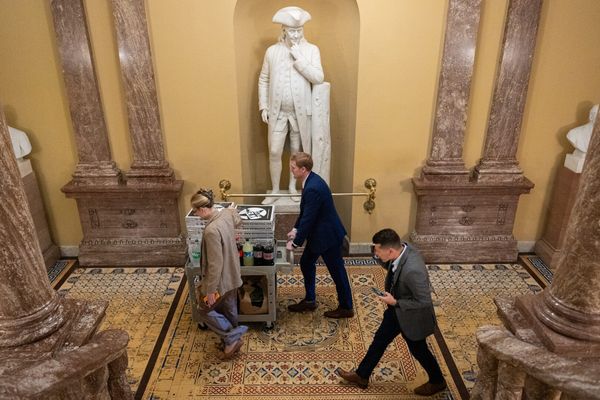DALLAS — Dallas will conduct an independent review of the city’s response to November’s deadly air show plane crash that killed six people at the Dallas Executive Airport.
The city said it will hire Virginia-based emergency management firm The Olson Group, Ltd. to conduct the review, which could take four to six months, Dallas interim aviation department director Patrick Carreno said.
“Any time something like this happens, we want to be able to have the opportunity to review it and learn from what happened,” Carreno said of the midair crash that happened Nov. 12 during the Wings Over Dallas Airshow.
The city typically conducts reviews, called after-action reports, of its responses to major incidents, such as when police arrested more than 600 protesters on the Margaret Hunt Hill Bridge in June 2020 or when historic rainfall flooded Dallas streets last summer. But those reviews are usually internally done by the lead department involved.
At times, an outside group is also brought in for a review, such as when a former IT employee deleted millions of archived police files in 2021.
Carreno estimated the contract for the outside review, which is still in the procurement process, would cost around $25,000 to $30,000. The aviation department expects to publicly present at least an executive summary of the findings to the City Council in the spring, he said.
The collision involving two historic planes is still under investigation by the National Transportation Safety Board. The federal agency released a four-page preliminary report Nov. 30 that didn’t list a crash cause, but did note that the involved pilots had no briefings to coordinate their altitudes before they were in the air or while in flight.
A memo sent Friday to Dallas City Council members said such briefings are common.
“Procedures for altitude deconflictions are often established and briefed in case pilots end up at an improper altitude during a flight,” wrote Deputy City Manager Kimberly Bizor Tolbert.
She also said the outside review would highlight improvements the city’s aviation department could have made in response to the crash and also “provide a general review with recommendations to support the department’s resilience and capability of responding to, managing, and recovering from future incidents at the Airports.”
The aviation department oversees Dallas Love Field, Dallas Executive Airport and the Dallas Heliport downtown.
According to the NTSB preliminary report, a Bell P-63 Kingcobra was banking left when it hit a Boeing B-17 Flying Fortress, killing the five passengers on the B-17 and the pilot of the P-63.
The P-63 was the third of three aircrafts in one formation at the time of the crash and the B-17 was the lead of a separate five-ship formation, according to the report.
Radio transmissions from the event show the air show official who communicates flight plans told the planes flying in the P-63 formation to fly in front the B-17 formation and to a line that was around 500 feet from the audience viewing area, the report said. The other formation was told to fly 1,000 feet from the audience area.
The report said a navigation device on the P-63 wasn’t recording during the flight. The final NTSB report could be released between the end of 2023 and the first half of 2024.
Flight safety experts told The Dallas Morning News in November that videos from the crash appear to show human error was likely a factor in the crash, but it’s not clear whether that error was by one of the pilots, someone charged with communicating with the planes or someone else involved in the air show’s preparations.
The Commemorative Air Force, which hosted the Wings Over Dallas show held in honor of Veterans Day, identified those who died as Terry Barker, Craig Hutain, Kevin Michels, Dan Ragan, Len Root and Curt Rowe. No one on the ground was injured or killed.
-------







